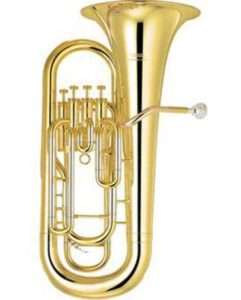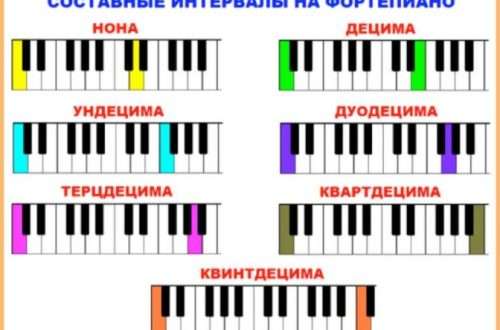How to learn to play the synthesizer?
Contents
How to learn to play the synthesizer, and even figure it out on your own? This is exactly what we will talk about today. Before we start our conversation, we’ll give you just two settings.
Well, first of all, there is one universal rule: to learn how to play the keys, you just need to one day just take it and start playing them. In fact, play is a practical activity that involves some degree of mental cunning.
Secondly, training is needed, because playing the synthesizer for “young, mischievous” and completely green beginners is like playing football. Imagine how many goals a football player will score in a match if he “scores” his training. I think very little, what do you think? But constant training allows you to improve and improve your skills. The results usually don’t take long to appear – what didn’t work out today turns out great literally the next day!
In addition to these “settings,” we note that in order for you to start learning to play the synthesizer and in order to hone your skills in training, you need to have this very synthesizer. Your own instrument, with which you are free to do whatever you want. Even if it’s the cheapest model (cheap doesn’t mean bad) or even a “toy synthesizer”, that will do for a start. If you are going to buy a cooler instrument, then you can read about how to choose a synthesizer in this article. Now, let’s return to our main question and take a closer look at it.
Getting to know the tool
In general, it’s enough just to turn on the instrument to start playing it, but it’s not a bad idea to get to know the basic capabilities of the synthesizer better. This instrument was called a synthesizer because it combines hundreds of tones of a wide variety of musical instruments and hundreds of ready-made arrangements in all possible styles of instrumental music.
Let’s see what function on the keys this or that button is responsible for. So, what can our synthesizers do:
- Play various instrumental tones (instrument bank). To make it easier to find the timbre we need, synthesizer manufacturers group them according to certain criteria: type of instrument (wind, string, etc.), material of the instrument (wood or copper). Any timbre has a serial number (each manufacturer has its own numbering – abbreviated lists are usually displayed on the body, complete lists of codes for a bank of instruments are published in the user manual).
- Automatic accompaniment or “self-pacing” – this feature makes playing the synthesizer much easier. With it you can play a piece in any style (blues, hip-hop, rock and others) or genre (waltz, polka, ballad, march, etc.). The best part is that you don’t even need to know sheet music to create music with self-playing. You just started the process – improvise and enjoy.
- In addition to the styles of ready-made arrangements, you can also experiment with the tempo and pitch (key) of the accompaniment being played.
- The record button will save the melody you played. You can use it as the second part of your composition: just turn on the recording and play something else on top.
Now let’s look at the operating panel of the simplest synthesizer. Everything in it is simple and logical, there is nothing superfluous. Synthesizer desktops are mostly of the same type. Look at the picture – on all other models everything is arranged almost the same:
Introduction to musical notation
Before actually sitting down at the keys, it is advisable to inquire about basic musical knowledge. Don’t worry, there aren’t that many of them! To help you – a textbook on musical notation, which our site gives to everyone. Fill out the form (at the top right of this page) to receive a simple and understandable textbook for those who passionately want to comprehend this brutal science.
What to do if you decide to learn to play the synthesizer yourself?
For those who have decided to master everything on their own, here are some tips. You need not to get carried away with theory, watching video lectures and reading thousands of books for dummies. Your musical perception is so fresh that you can learn a lot intuitively, the main thing is to practice more. This is the first tip.
In order for something to start working out, you will have to devote time to practicing the instrument – it’s very addicting, it literally “blows the roof off”, so in order not to sit at the instrument all night long, ask your relatives to tear you away from the synthesizer from time to time and put you to bed. This was the second tip.
Jokes aside, there are real problems that beginners have. Many beginners take on something that is temporarily too tough for them – there is no need to do this. If you want to play something complex, look for a simplified version of this piece, or better yet, start with single-voice melodies, simple exercises, and maybe even scales (some people like to play scales – they sit for hours without stopping).
Musicians have such a concept as fingering. This terrible word refers to the expediency of playing a particular note with one or another finger. In short: which fingers to press the buttons with? It may seem to you that this is all funny, but we cannot say enough about the importance of fingering principles.
Imagine: you need to play five notes in a row, five keys that are located one after another on the keyboard. What is the easiest and fastest way to do this? After all, you can’t use the same finger to poke all five buttons? Of course not! It is much more convenient to place five fingers of your hand (one above each key), and then use light “hammer-like” movements to touch the five keys.
By the way, keyboard players’ fingers are not called by their proper names (thumb, index, middle, etc.), but are numbered: 1 – thumb, 2 – index, 3 – middle, 4 – ring, 5 – little finger. Good sheet music for beginners has a fingering above each note (that is, the “numbers” of the fingers you need to play those notes with).
The next thing you need to learn is to play chords (three sounds played at the same time). Practice your movements clearly, moving your fingers from key to key. If some fragment doesn’t work out, play it again and again, bring the movement to automatism.
Once you have learned the location of the notes, sight-read them (that is, try to play an unfamiliar piece at an average tempo, making as few mistakes as possible). Reading sheet music is an essential skill for those who in the future want to not just mechanically perform memorized melodies, but quickly and without any difficulties play completely new pieces directly from the sheet music (this is especially useful at family meetings, parties – you can perform songs ordered by your friends).
How to play the synthesizer without knowing the notes?
Don’t know sheet music, much less have any idea how to play a synthesizer? Pamper yourself, feel like a mega-keyboardist – the auto accompaniment will help you with this. Mastering the skill of playing the synthesizer with the help of a “samograika” is as easy as shelling pears, complete the tasks according to the points:
- Turn on the accompaniment function. We will still find all the buttons we need.
- Know that the left hand is responsible for the accompaniment, and the right hand is responsible for the main melodic line (it is not even necessary to play the melody).
- Select the style of piece you are going to perform. Decide on its pace.
- Select the timbre of the instrument for the solo part (if you play a melody, if not, skip it).
- Turn on a button like “PLAY” or “START” and the synthesizer will play the intro itself.
- With your left hand on the left side of the keyboard (the closer to the edge, the better), play chords or simply press any key. The instrument will play the rhythm, bass, accompaniment, pedal and everything else for you.
- You can try playing a melody with your right hand. In principle, this is not a prerequisite, because you can sing to the accompaniment you made!
- Is the song ending? Press “STOP” and the synthesizer itself will play you an interesting ending.
In order to use all these modes, find a number of buttons on your model that are similar to those shown in the figure:
Do we study on our own or take lessons?
There are several training options, let’s look at each of them.
- Private lessons from a teacher. A good option for those who do not know how to discipline themselves. Compulsory attendance at classes and regular homework will force you to play something on the synthesizer sooner or later.
- Synthesizer playing courses. Classes are held in the same way as private ones, only instead of one person, the teacher teaches several at once, which is not so effective.
- Video lessons. A good teaching method: download the lesson, watch it several times and follow everything according to the teacher’s recommendations. You set the class time and deadlines for studying the material yourself.
- Game tutorial (book, website, online magazine, etc.). Another good way to learn the features of playing the synthesizer. Choose the material you like – and go to the musical barricades. The big plus is that you can always go back and read (watch) the material you didn’t understand again and again.
- With the help of a synthesizer “training machine”. On the display screen, the program tells you which keys to press with which hand and fingers. This method is more like coaching. You will undoubtedly have reflexes a la “Pavlov’s dog”, but this will not help you advance far in your synthesizer performance skills.
Of course, it is impossible to learn everything about how to learn to play the synthesizer at one time. But we helped solve the problems that all newbies face.




